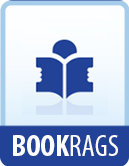NOTE
As these pages are passing through the press, I note an appeal for money by the Religious Tract Society, which is running short of funds to keep up the number and quality of the 6-7,000 Bibles annually awarded as prizes to elementary school children. This advertisement fills more than half a column of the Times of March 25, 1920. It is headed in bold type, PROFESSOR HUXLEY ON THE BIBLE, and, opening with the words “All who value the teaching of the Holy Bible will appreciate this wonderful description of the Bible by Professor Huxley,” proceeds to quote the eloquent passage, referred to above on p. 54, from “The School Boards, etc.” (Coll. Ess., iii, 396).
This testimony to the interest of the Bible outside its theological applications is detached from its context as a spur to “all those who value the Word of God... to send the Society help in [its] work of extending Bible teaching in our Elementary Schools.”
But these words were written with grave qualifications, especially as to the need of excluding doctrinal teaching. By suppressing these qualifications the Secretaries of the Religious Tract Society approve themselves denizens of the world of half-truths, along with puff-writers and similar experts.
X
EDUCATION: ESPECIALLY OF TEACHERS AND OF WOMEN
The third of his excursions into the field of education, in his burning desire to give the people that right knowledge for want of which they perish, was the training of the teachers who prepared pupils for the examinations of the Science and Art Department. The future of scientific teaching depended upon the proper supply of trained teachers. Now, the School of Mines in Jermyn Street was without a laboratory in which to make even his own students work out with their own hands the structure of the biological “types” expounded in the lectures. An opportunity to train these new “scientific missionaries” came in 1871, when he was deep in the great schemes of elementary education. More than a hundred of them flocked to South Kensington, where some large rooms on the ground floor of the museum had been secured and rigged up for the purpose by the Professor and his three demonstrators. For six weeks in the summer there was a daily lecture, followed by four hours’ laboratory work under the demonstrators, in which the students verified for themselves facts which they had hitherto heard about and taught to their unfortunate pupils from books alone. The naive astonishment and delight of the more intelligent among them was sometimes almost pathetic. One clergyman, who had for years conducted classes in physiology under the Science and Art Department, was shown a drop of his own blood under the microscope. “Dear me!” he exclaimed, “it’s just like the picture in Huxley’s Physiology.”




